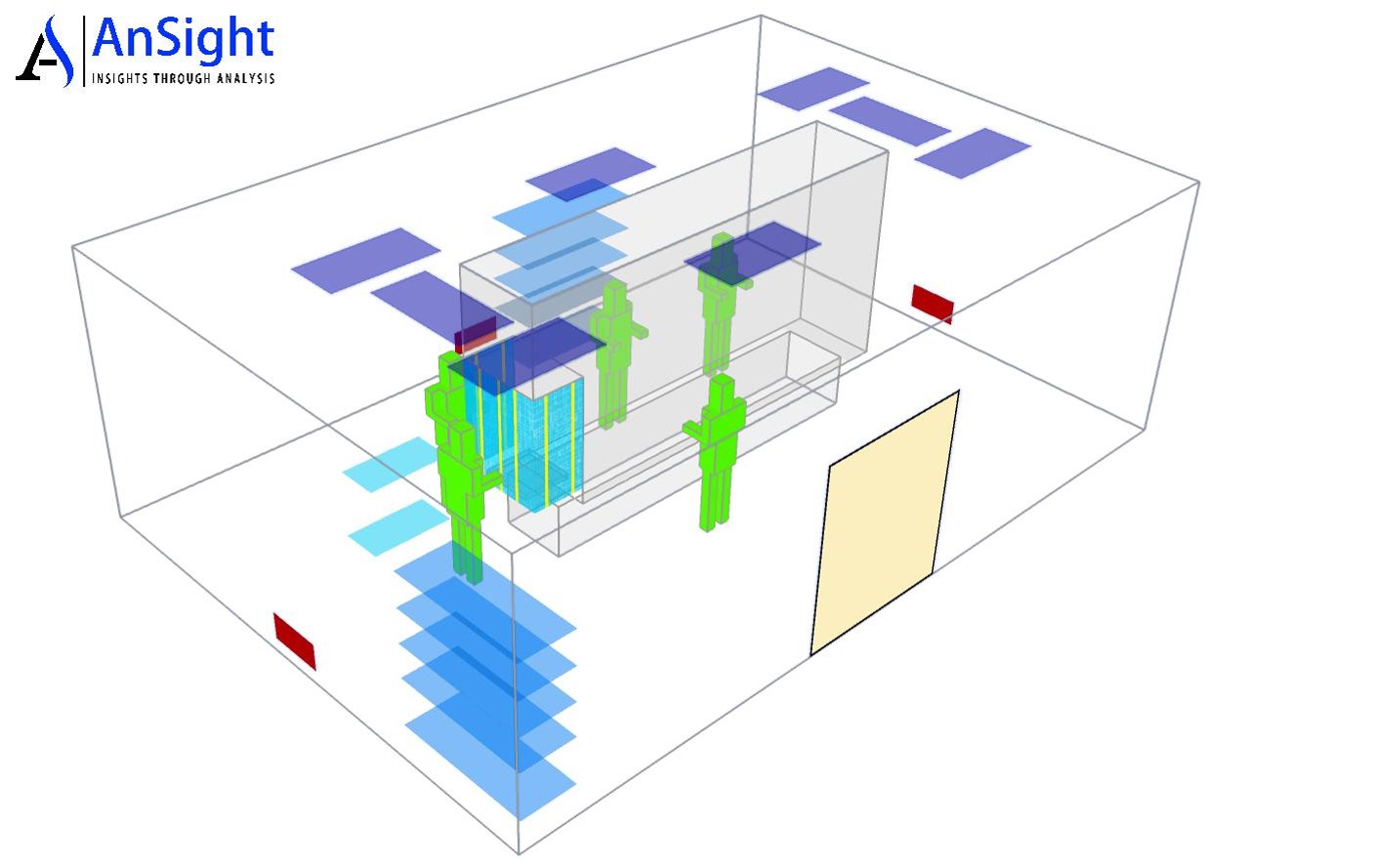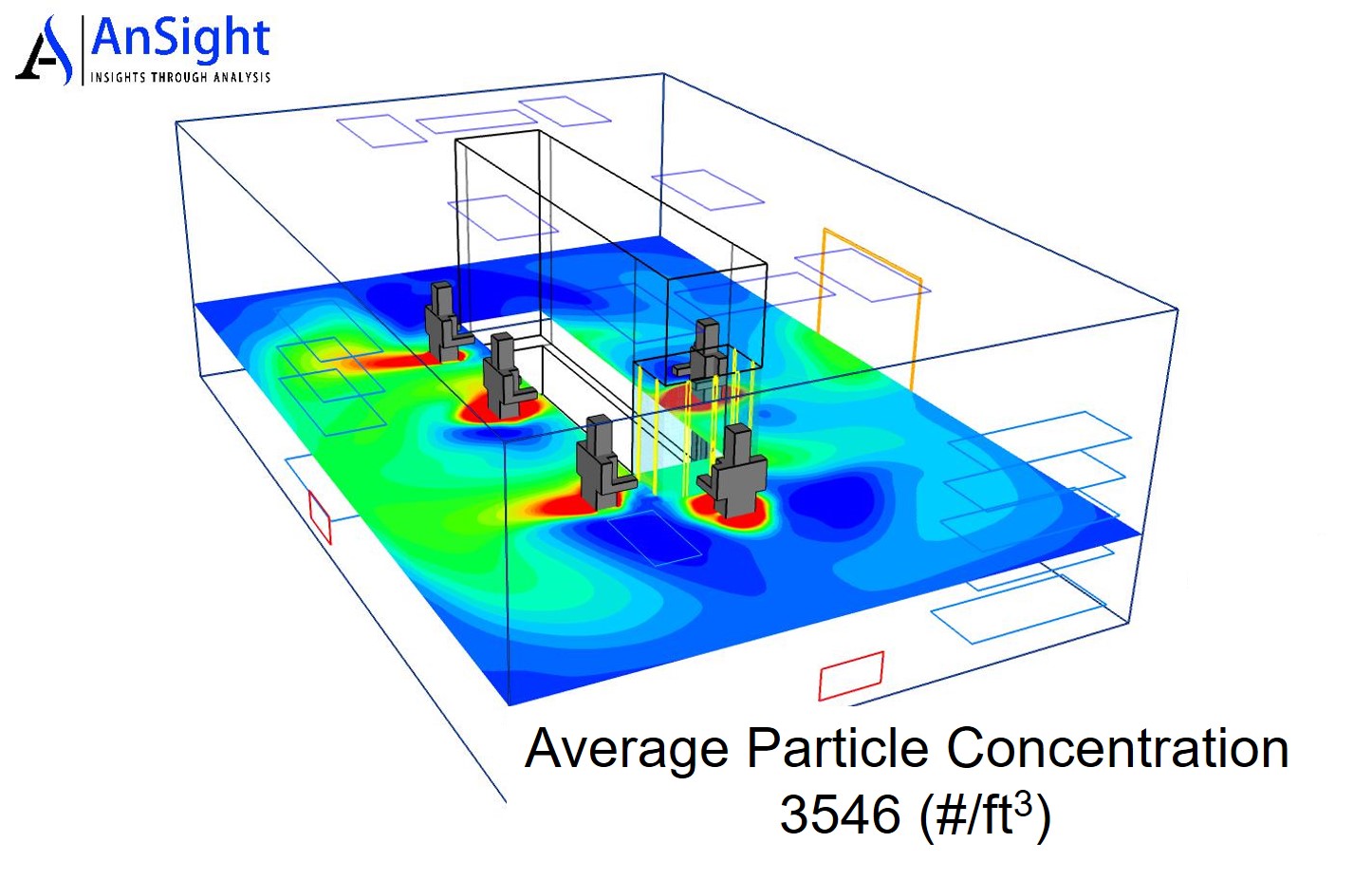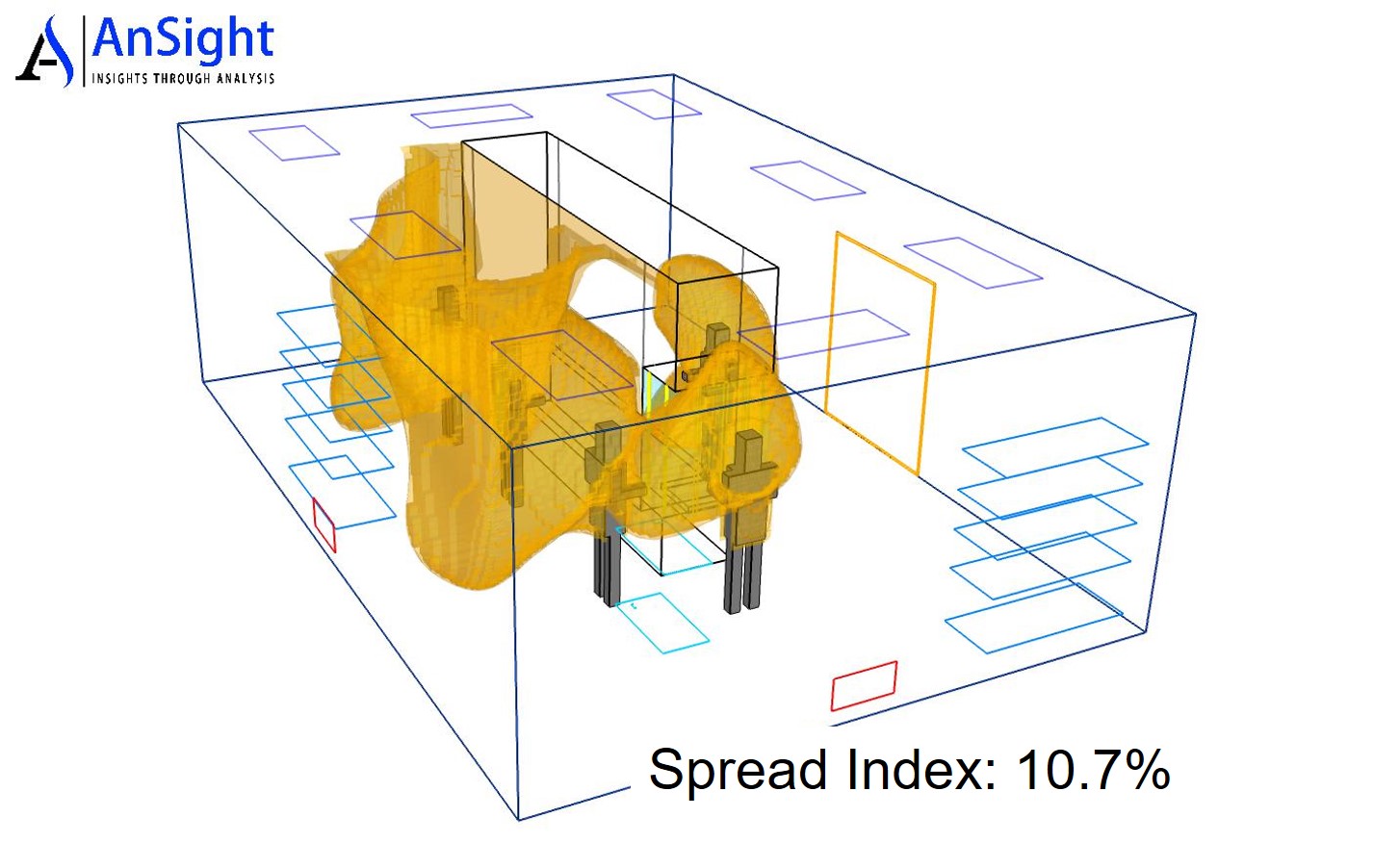Design Optimization Using CFD Can Yield Significant Savings in the First and Operating Costs of a Pharmaceutical Cleanroom
Contaminant Control for Pharmaceutical Cleanrooms
Pharmaceutical cleanrooms are employed for the manufacturing of sterile and nonsterile drugs and medical products. Cleanroom facilities are required to maintain a certain level of cleanliness to keep the aseptic environment surrounding the manufacturing processes and products. A significant source of contaminants in a cleanroom is particle generation from the cleanroom personnel. The most common approach for controlling the particle concentration levels in cleanrooms is by diluting the contaminants with clean air. The specifications for the required supply airflow rates or air changes per hour (ACH) are often based on the engineer’s judgment or the owner’s QA specification. Depending on the cleanroom cleanliness levels, which are generally specified in terms of ISO class, the ACH values can range from 5 to 600. Often cleanroom HVAC systems are designed for higher ACH to ensure a higher level of dilution. Similarly, the ISO classes for the cleanroom classifications are based on the maximum permitted values of particle concentration which are measured at several critical locations in a cleanroom. The distribution of particles is seldom uniform and the cleanroom environment is not often well mixed as usually assumed in the dilution theories. In reality, the highest cleanliness level is required in the vicinity of the products which is the most critical zone for ventilation in a pharmaceutical cleanroom. Therefore, simply meeting the requirement of average particle concentration in a cleanroom as predicted by dilution theories does not serve the real purpose of contamination control. Moreover, the notion that higher ACH would ensure a higher level of cleanliness is not necessarily true.
Why Airflow Patterns Matter?
Since air is the primary carrier of particles, heat, and other contaminants in indoor spaces, airflow patterns play a crucial role in determining indoor conditions in general and the distribution of particle concentration in particular. The contamination control performance of a cleanroom depends on the clean air properly sweeping the contaminant sources without short-circuiting and ideally following a single pass-through pattern without recirculation. Airflow patterns and the resulting flow path of airborne contaminants depend on several factors including the location of supply diffusers, supply airflow rates and associated diffuser throws, supply air temperature, size and locations of room return, leakage areas, and associated leakage airflow rates, locations and strengths of various heat sources in a room, location and size of obstructions to airflow, and relative location and strength of particle generating entities in a cleanroom.
Benefits of CFD Analyses of Cleanrooms
Systematic evaluation of the impact of all the parameters on the HVAC performance of cleanrooms is time-consuming, labor-intensive, and even impossible during the design stage. In such situations, Computational Fluid Dynamics (CFD) simulations can help in optimizing the HVAC design of a pharmaceutical cleanroom under a variety of design and operating conditions. Simply increasing the ACH levels does not ensure the required cleanliness in critical areas of a cleanroom. High ACH often incurs the high cost of HVAC equipment and higher recurring costs for cleanroom operation. CFD analyses can help not only in ensuring the proper aseptic environment in the critical regions but can also reduce the ACH levels by optimizing the HVAC layout of supply diffusers and return locations. CFD analyses help visualize the complex three-dimensional airflow patterns in a cleanroom and predict three-dimensional distribution of particle concentrations in the entire cleanroom space as well as in the critical zones.
CFD Analysis of a Pharmaceutical Cleanroom

Laminar diffusers near the cleanroom walls

Supply diffusers close to the isolator
Figure 1: Schematic of the two design options for a cleanroom a) supply diffusers near the cleanroom walls b) supply diffusers close to the isolator over the operators.


Figure 2: CFD analysis shows contours of particle concentration in the critical zone. Placing the laminar diffusers over the operators near the isolator reduces the particle concentration by 19 percent without increasing the ACH which can yield significant savings in the first cost and operating cost of a cleanroom.


Figure 3: CFD analysis shows Spread Index for ISO 7 class. Placing the laminar diffusers close to the isolator reduces the spread of particles and increases the coverage for ISO 7 class by 10 percent making the cleanroom conditions cleaner without increasing the ACH which makes the cleanroom more energy efficient with reduced carbon emission.
These analyses indicate that increasing the ACH levels for cleanrooms does not ensure the required level of cleanliness in the critical zone of a cleanroom. The layout of supply diffusers plays a prominent role in determining the effectiveness of contaminant removal than the ACH. The placement of supply diffusers over the sources of contaminants (operators) helped improve the contaminant removal effectiveness and resulted in reducing the particle concentration levels without increasing the air change rates. CFD analyses can help optimize the design and operating conditions of a cleanroom to achieve a higher level of cleanliness with lower air change rates which can yield significant savings in the first and operating costs of a cleanroom.

